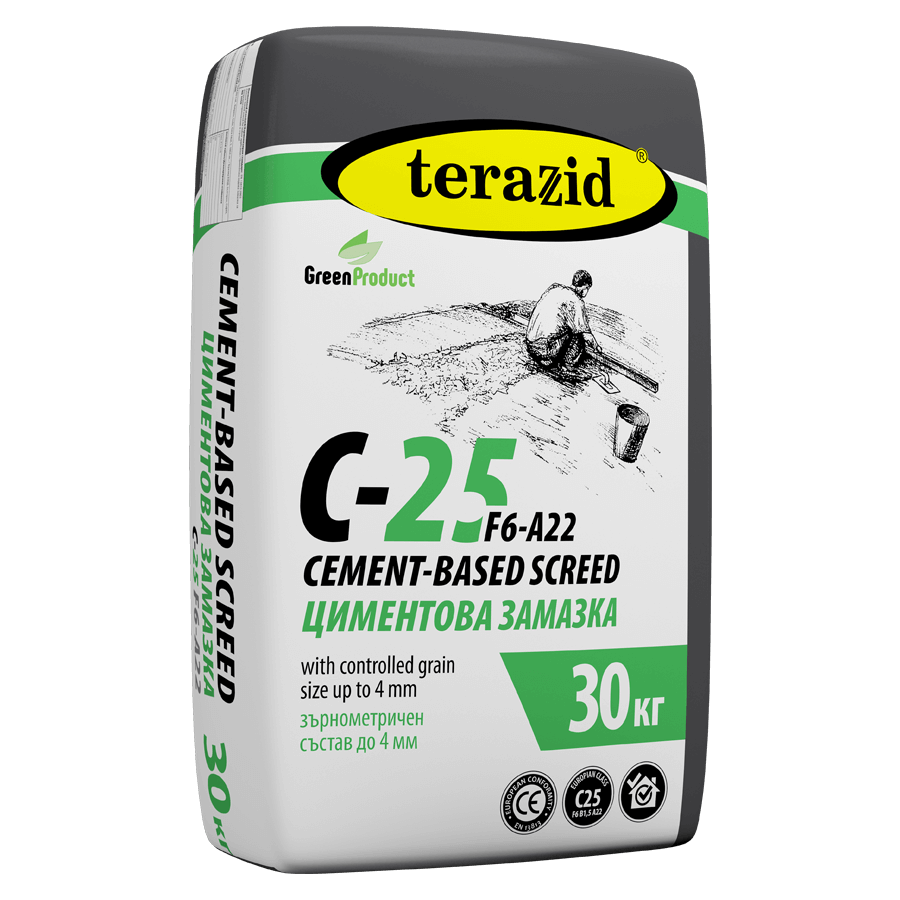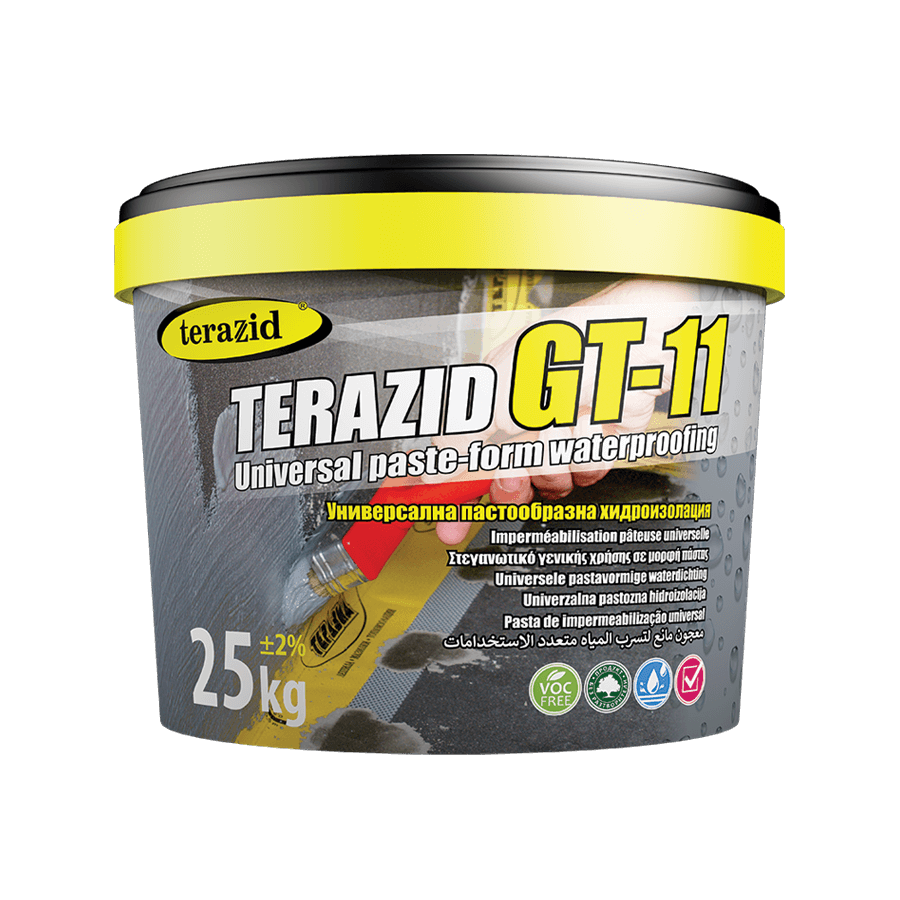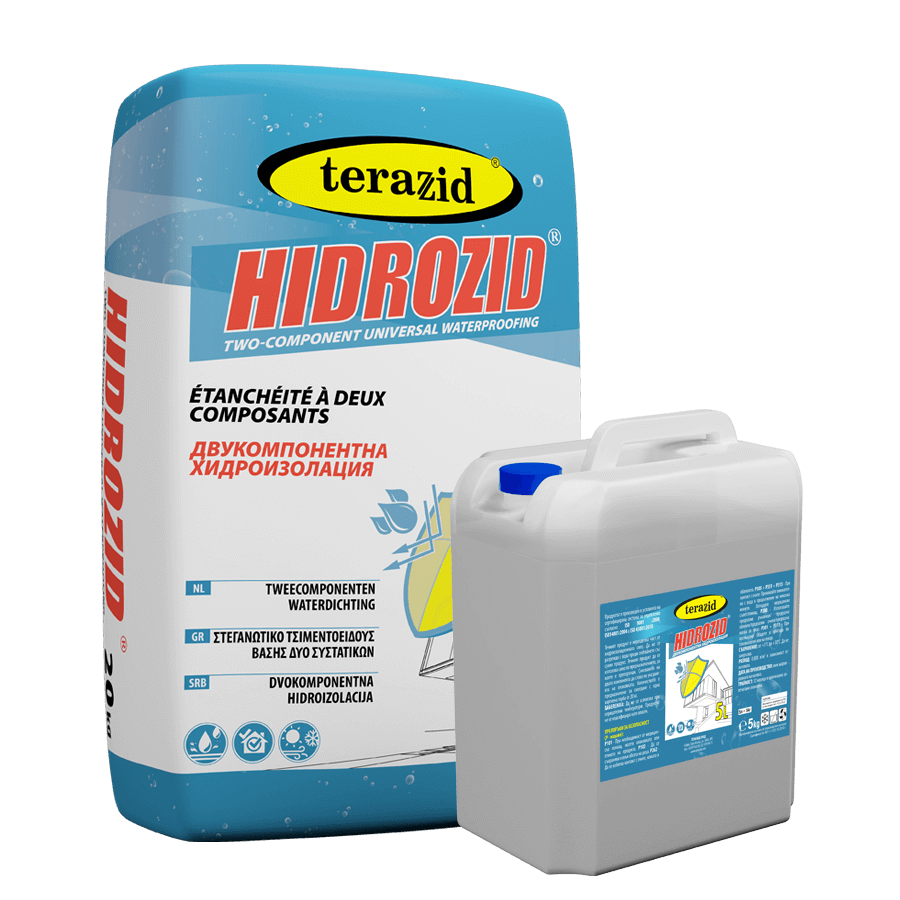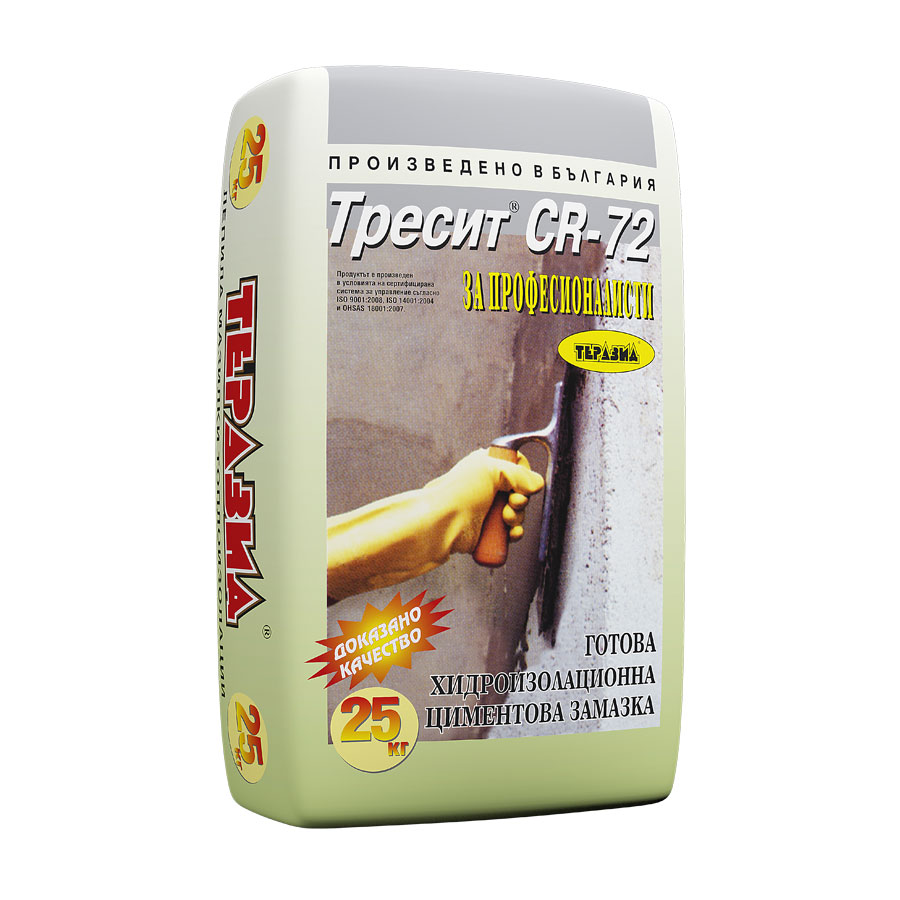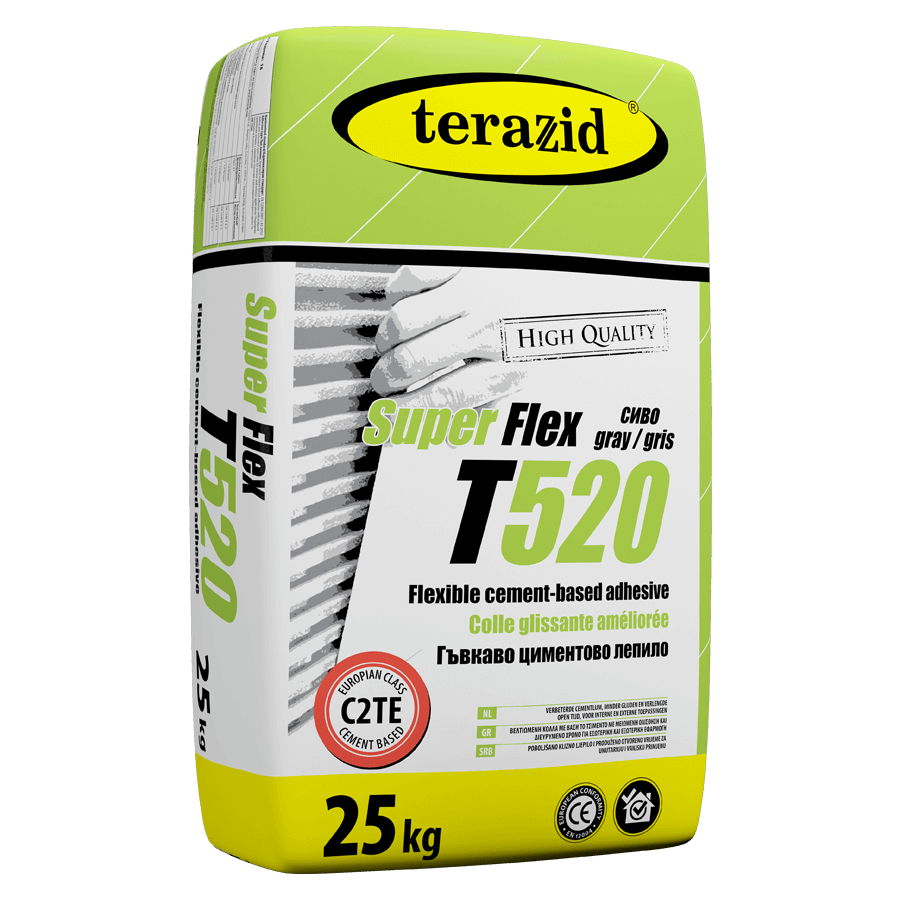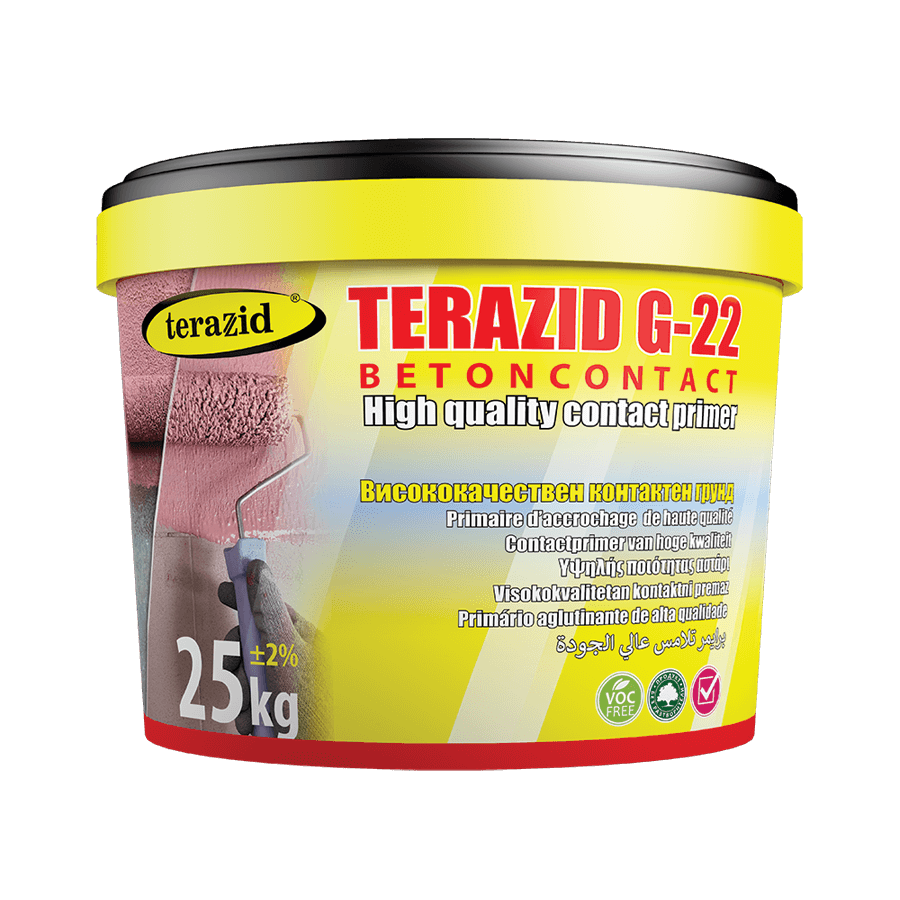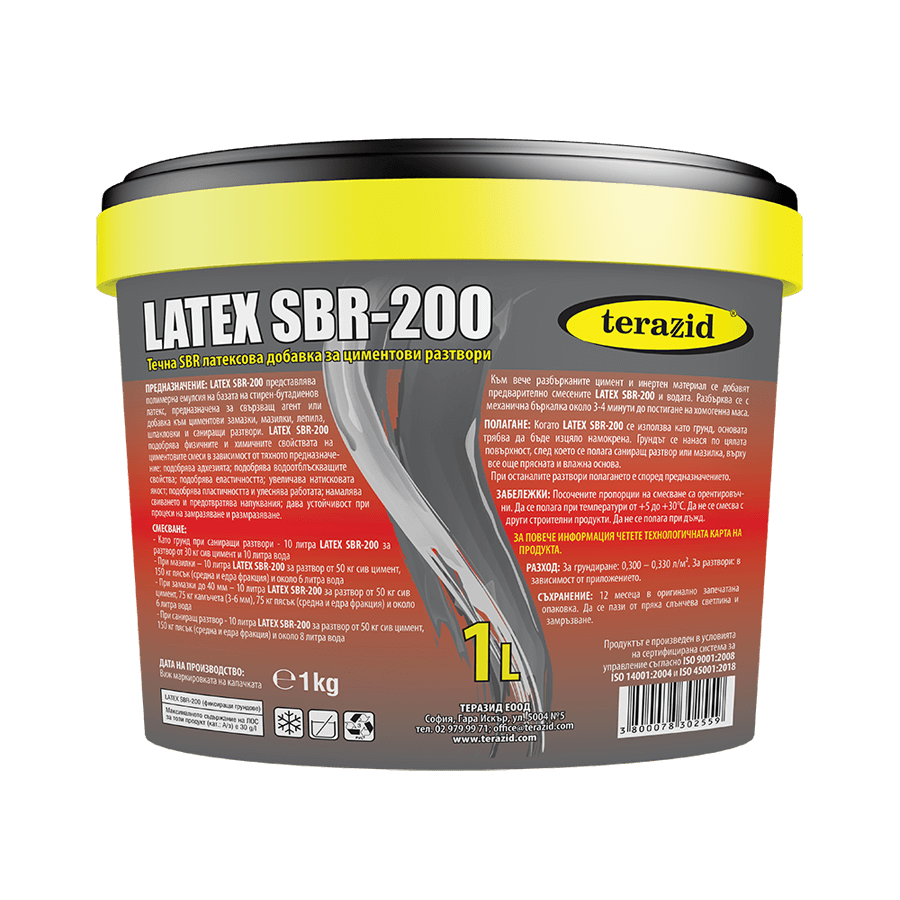C-25 – cement-based screed
Class C25F6B1.5A22 – According to EN 13813:2003
High-quality cement-based mixture for levelling floor screeds with thickness over 3 cm
Category: Cement based mixtures
Description:
PURPOSE
The CEMENT-BASED SCREED C-25 is a dry cement-based mixture, with added sifted river sand (with controlled grain size up to 4 mm) and special polymers. The product is used for levelling of new concrete floors, as well as for repairing of old surfaces.
The screed is designed for both, manual and machine application, with minimum 3 cm thickness of the screed layer.
Material Safety Data Sheet (MSDS)
C-25 – cement-based screed
Material Safety Data Sheet (MSDS)
CEMENT BASED SCREED C-25
MATERIAL SAFETY DATA SHEET
According to (EU) 830/2015
1. Identification of the Substance/Mixture and of the Company
1.1. Product identifier – CEMENT BASED SCREED C-25
1.2. Application of the substance
Cement-based mixture for levelling floor screeds.
1.3. Details of the supplier of the safety data sheet
TERAZID Ltd.
5, 5004 Street, Gara Iskar
1528 Sofia, Bulgaria
tel. +359 2 9799971, office@terazid.com
1.4. Emergency telephone number (EU) 112
UMHATEM “Pirogov” (toxicology) – +3592/9154409; +3592/9154233
2. Hazards Identification
2.1. Classification of the substance or mixture
-
Classification in accordance with Regulation (ЕО) 1272/2008 – CLP: The product is classified as „dangerous“.
2.2. Label elements
Hazard pictograms:

Signal word: Danger!
Hazard statements:
H315 – Causes skin irritation.
H318 – Causes serious eye damage.
H335 – May cause respiratory irritation.
Precautionary statements:
P101 – If medical advice is needed, have product container or label at hand.
P102 – Keep out of reach of children.
P261 – Avoid breathing dust/fume/gas/mist/vapours/spray.
P280 – Wear protective gloves/protective clothing/eye protection/face protection.
P302 + P352 – IF ON SKIN: Wash with plenty of soap and water.
P332 + P313 – If skin irritation occurs: Get medical advice/attention.
P305 + P351 + P315 – IF IN EYES: Rinse cautiously with water for several minutes. Get immediate medical advice/attention.
P402 – Store in a dry place.
2.3. Other hazards
Contains portland cement. When reacting with water, it creates an alkaline medium. Does not contain soluble Cr (VI) in a quantity greater than 0.0002% within the period of storage.
For all warnings and recommendations, see Section 15.
3. Composition/information on ingredients
General chemical description: Dry mixture on the basis of portland cement, mineral fillers and modifying additives.
Information of the substances in accordance with CLP 1272/2008/EC
| CAS № EINECS № |
Name | Concentration (%) | Signal word | H-codes |
|---|---|---|---|---|
| 65997-15-1 266-043-4 |
Grey cement | 20-40 | Hazardous | H315, H318, H335 |
All warnings can be seen in Section 15.
4. First Aid Measures
4.1. Description of the first aid measures
Inhalation – Remove the person to fresh air. If symptoms continue, immediately seek qualified medical help.
Skin contact – Immediately rinse the contact area with plenty of water, then wash thoroughly with soap and water.
Eye contact – Irrigate with plenty of water for at least 15 minutes while keeping eyelids open. Seek qualified medical help.
Ingestion – Do NOT induce vomiting. Seek qualified medical help.
4.2. Most important symptoms and effects, both acute and delayed
In contact with the eyes: irritation.
In contact with the skin: redness, inflammation.
4.3. Indication of any immediate medical attention and special treatment needed – see p. 4.1.
5. Firefighting Measures
CEMENT BASED SCREED C-25 is a non-combustible and non-explosive product.
5.1. Extinguishing media
Water mist, water spray – sprayer, dry chemical, foam, carbon dioxide.
Inappropriate means for extinguishing fire – Not known.
5.2. Special hazards, arising from the substance or mixture – None known
5.3. Advice for firefighters – Use autonomous respiratory equipment.
6. Accidental Release Measures
6.1. Personal precautions, protective equipment and emergency procedures
Wear gloves, masks, and protective clothing for work. Avoid contact with skin and eyes.
6.2. Environmental precautions
Prevent this product from being released into the environment. Measures should be taken to prevent contamination of surface and underground watercourses, soil, and entry into drains.
In the event of an accident and/or spill, localization and limitation measures must be taken. The collected product should be temporarily stored in special, tightly closed and labeled containers, and then transferred to persons holding permits under Article 37 of the Waste Management Act.
6.3. Methods and materials for containment and cleaning up
The spilled amount should be mechanically removed, taking measures to prevent high concentrations of dust in the air. Dust or unhardened mixture should be rinsed with water and soap.
Collected material should be stored in special, tightly closed and labeled containers, temporarily stored on the company premises, and then transferred to authorized waste handlers under the Waste Management Act (WMA).
7. Handling and Storage
7.1. Precautions for safe handling
The product should be used only for its intended purpose. Do not eat, drink, or smoke while working. Avoid dust formation and ventilate the room frequently. Avoid skin and eye contact.
7.2. Conditions for safe storage, including any incompatibilities
Store in ventilated and dry areas in the originally sealed packages. Avoid temperatures below 0°C and above +50°C.
Keep stored separately from food and drinks.
7.3. Specific usage
There is no specific usage. It should be used only for its intended purpose.
8. Exposure Controls/Personal Protection
8.1. Control parameters
Portland cement – permitted level of inhaled powder particles: 5 ppm / 5 mg/m³ air.
8.2. Exposure controls
8.2.1. Respiratory protection – Use a P2 filter mask to prevent inhalation of dust.
8.2.2. Skin protection – Avoid skin contact; wear protective gloves.
8.2.3. Eye protection – Avoid eye contact; wear safety glasses.
8.2.4. Common protection – Keep away from food, drinks, and animal feed.
9. Physical and Chemical Properties
9.1. Information on basic physical and chemical properties
-
Appearance – fine powder
-
Color – grey
-
Odor – none
-
pH at 20°C – approximately 8.2
-
Density – approximately 1250 kg/m³
-
Solubility – insoluble
-
Explosive properties – non-explosive
9.2. Other information
No data.
10. Stability and reactivity
10.1. Reactivity – The product reacts with moisture and hardens.
10.2. Chemical stability – The product is stable under storage and usage in accordance with the indications.
10.3. Possibility of hazardous reactions – See section 10.1.
10.4. Conditions to avoid – Keep away from moisture during storage and transportation.
10.5. Incompatible materials – No data.
11. Toxicological Information
11.1. Information for the toxicological effects
Toxicological properties of the product have not been tested. The product is classified under the conventional method according to Regulation (ЕО) 1272/2008 – CLP. Based on its composition, the product is not considered toxic under proper use.
-
Ingestion – Unlikely to cause reactions or long-term effects but should be avoided.
-
Inhalation – Dust may cause irritation of the nose, throat, and lungs, leading to coughing.
-
Skin contact – May cause irritation when in contact with heat and sweat, but is not absorbed through the skin.
-
Eye contact – May cause serious eye damage.
12. Ecological Information
12.1. Toxicity
Not expected to be hazardous to the environment (LC50 toxicity in water – not defined). However, adding large amounts to water may increase pH and become toxic to aquatic organisms under certain conditions.
12.2. Persistence and degradability – No data.
12.3. Bio-accumulative potential – Low potential for bioaccumulation.
12.4. Mobility in soil – Hard, inorganic product.
12.5. Results of PBT and vPvB assessment – The product does not meet the criteria for PBT (Persistent, Bioaccumulative and Toxic) or vPvB (Very Persistent and Very Bioaccumulative).
12.6. Other adverse effects – No data.
13. Disposal Considerations
Product waste, such as residual quantities and packaging, should be collected in special, tightly sealed and labeled containers, temporarily stored, and then transferred to authorized waste handlers in accordance with Article 37 of the Waste Management Act (publication SG, issue 53, 2012).
Waste code, in accordance with Regulation №2 from 23.07.2014 for Waste Classification:
-
10 13 – Waste from the production of cement, lime, gypsum, and products made of these materials
-
10 13 14 – Waste concrete and concrete sediment
-
15 01 – Packages
13. Disposal Considerations (continued)
15 01 10* – Packages containing residues of hazardous substances or contaminated with hazardous substances.
Completely empty the packages and dispose of them in accordance with local regulations – at designated places for paper waste.
14. Transport Information
The product is not classified as hazardous for transport under RID, ADR, ADNR, IMDG, IATA-DGR.
It should be transported in compliance with the applicable regulations for the specific mode of transport, ensuring the safety of the load.
15. Regulatory Information
15.1. Classification and labeling of the product in accordance with Regulation (ЕО) 1272/2008 – CLP (full text of the codes)
GHS Pictograms:

GHS05 GHS07
15. Regulatory Information (continued)
Signal word: Danger!
Recommendations for danger (N – codes): None
Hazard statements (H – codes):
H315 – Causes skin irritation.
H318 – Causes serious eye damage.
H335 – May cause respiratory irritation.
Precautionary statements (P – codes):
P101 – If medical advice is needed, have product container or label at hand.
P102 – Keep out of reach of children.
P261 – Avoid breathing dust/fume/gas/mist/vapours/spray.
P280 – Wear protective gloves/protective clothing/eye protection/face protection.
P302 + P352 – IF ON SKIN: Wash with plenty of soap and water.
P332 + P313 – If skin irritation occurs: Get medical advice/attention.
P305 + P351 + P315 – IF IN EYES: Rinse cautiously with water for several minutes. Get immediate medical advice/attention.
P402 – Store in a dry place.
15.2. Legislation
National Legislation:
▪ Law of Protection from the Harmful Impact of the Chemical Substances and Preparations
▪ Environmental Protection Law
▪ Health and Safety at Work Act
▪ Ordinance №3 on the minimum requirements for safety and protection of the workers when using personal protective equipment at the workplace
▪ Waste Management Act
▪ Ordinance №2 from 23.07.2014 for Waste Classification
▪ Ordinance on the order and the method of classification, labeling and packaging of chemical substances and preparations
▪ Regulation (ЕО) 1272/2008 – CLP from 16th December 2008, concerning the classification, labelling and packaging of substances and preparations
▪ Regulation (ЕО) 830/2015 from 28th May 2015
16. Other Information
16.1. Indication of changes
Format in accordance with Regulation (ЕО) 830/2015 from 28th May 2015 amending Regulation № 1907/2006 (REACH) of the European Parliament.
16.2. Training advice
In addition to the training programs on environment and health and safety of the workers, companies must ensure that their workers read, understand, and apply the requirements of the MSDS.
16.3. Additional information
See the application(s) of exposure scenarios for the following substances:
The basic information on the exposure scenarios of the substances in the mixture is included in Sections 1, 2, 3, 8, 11, and 12.
16.4. Disclaimer
This safety data sheet and the data contained in it are based on many years of industrial and commercial experience and are fully compliant with the current applicable legislation of the Republic of Bulgaria and the European Union.
This safety data sheet is not intended to guarantee any specific properties or qualities of the product. The information provided is reliable, but only when the product is used under the specified conditions and application, as indicated on the packaging and/or in technical literature.
Responsibility for any other use of the product, including use in combination with another product or process, lies entirely with the user. It is understood that the user is responsible for determining appropriate precautions and for complying with all relevant legislation applicable to their activity.
Technical Data
| Thickness of the layer | minimum 3 cm |
| Time for bucket stay | 60 min. |
| Time for final hardening and following procedures | 14 days |
| Ready for walking after | 48 h. |
| Consumption | 20-22 kg/m² (1 cm layer thickness) |
| Package | 30 kg |
| Price | see price list |
| Pieces | 42 pcs/pallet |
Related Products
Waterproofing
Adhesives for ceramic and stone floorings and coverings
Primers and impregnators
Additives for concrete
